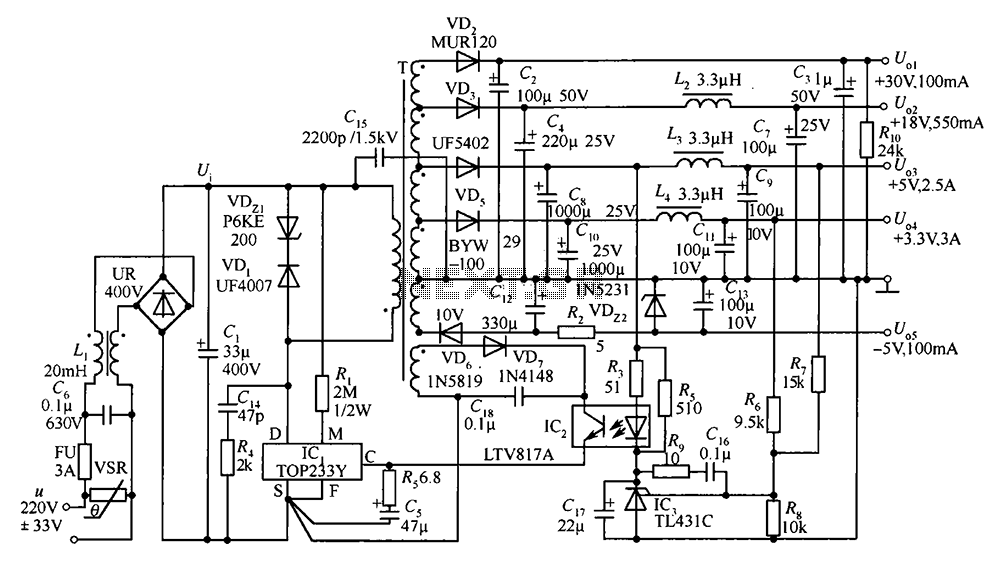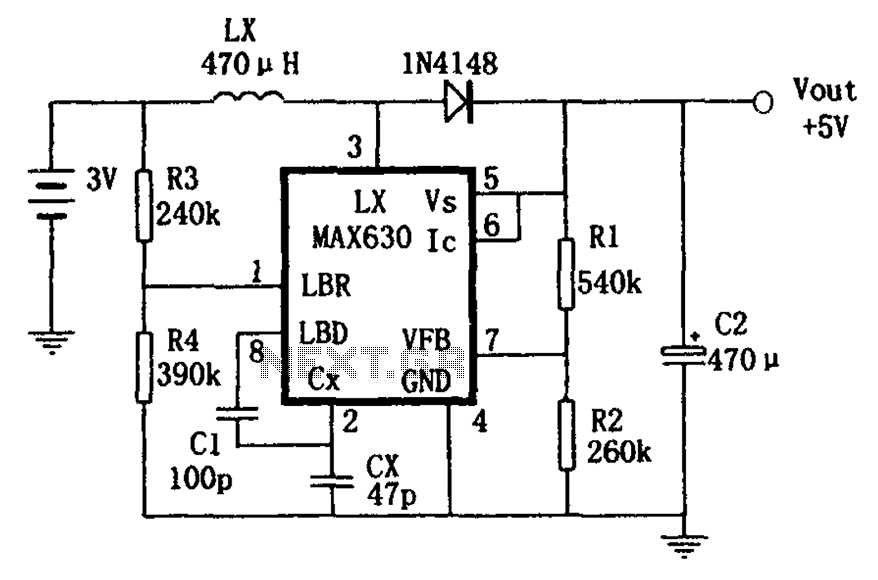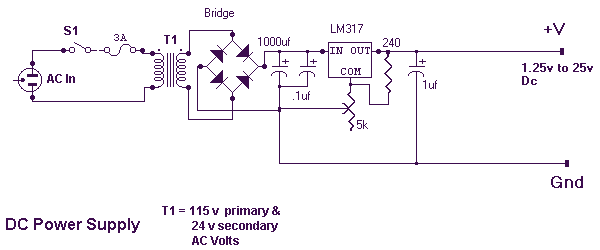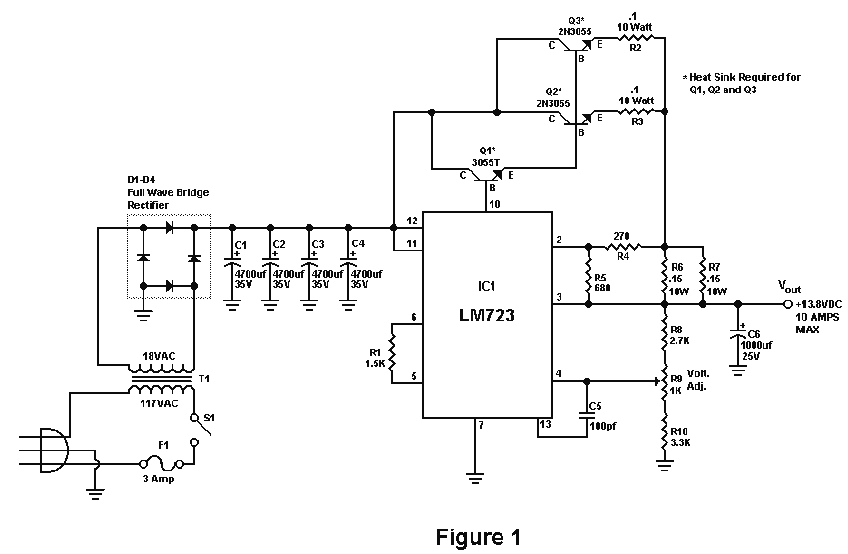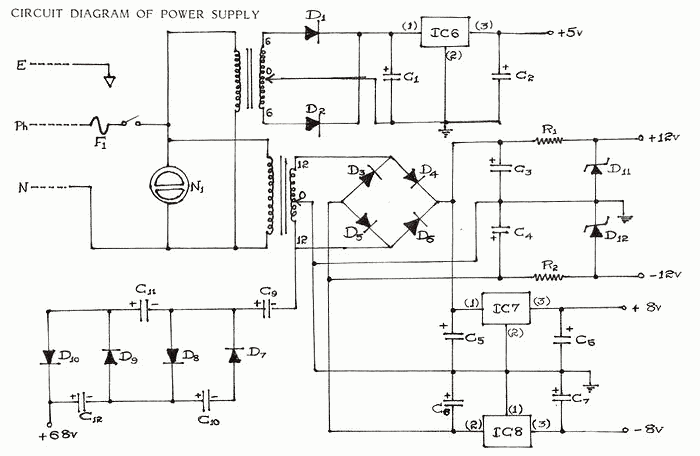
TPA2011D1 3.2W Mono Filter-Free Class-D Audio Power Amplifier With Auto-Recovering Short-Circuit Protection
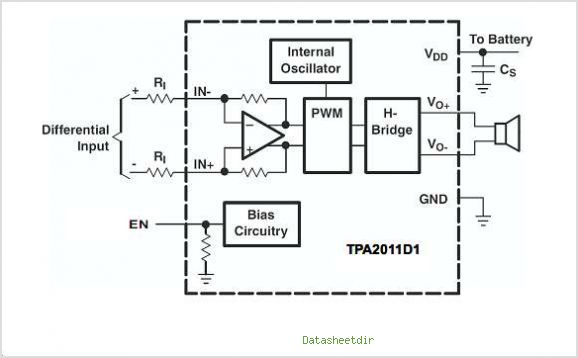
The TPA3007D1 is a 6.5-W mono bridge-tied load (BTL) class-D audio power amplifier featuring high efficiency, which eliminates the need for heat sinks. This amplifier can drive 8-ohm speakers with only a ferrite bead filter required to reduce electromagnetic interference (EMI). The gain of the amplifier is controlled by two input terminals, GAIN1 and GAIN0, allowing configuration for gains of 12, 18, 23.6, and 36 dB. The differential input stage offers high common mode rejection and enhanced power supply rejection. Additionally, the amplifier includes depop circuitry to minimize the audible pop sound during power-up and when cycling the shutdown mode. The TPA3007D1 is provided in a 24-pin TSSOP package (PW) and does not necessitate an external heat sink. The device is manufactured by Texas Instruments.
The TPA3007D1 class-D audio power amplifier is designed for efficient audio amplification in various applications, such as portable audio devices, televisions, and home theater systems. The bridge-tied load configuration allows for greater output power without requiring a dual power supply, making it suitable for battery-operated devices. The high efficiency of the TPA3007D1, typically above 90%, significantly reduces power loss as heat, which is an important factor in compact designs where space and thermal management are critical.
The amplifier’s gain configuration through the GAIN1 and GAIN0 terminals provides flexibility in system design, allowing engineers to select the optimal gain setting based on the specific application requirements. This feature is particularly useful in scenarios where the input signal levels may vary, ensuring consistent audio performance across different sources.
The differential input stage enhances the amplifier's ability to reject common-mode noise, which is essential in environments with substantial electromagnetic interference. This characteristic is vital for maintaining audio clarity and fidelity, especially in consumer electronics where signal integrity is paramount.
The inclusion of depop circuitry is a thoughtful design feature that addresses a common issue in audio amplifiers. By reducing the transient noise typically associated with power-up and shutdown sequences, the TPA3007D1 ensures a smoother user experience, preventing sudden loud pops that can be damaging to speakers and jarring to listeners.
The compact 24-pin TSSOP package facilitates easy integration into printed circuit boards (PCBs), allowing for efficient use of space while maintaining robust electrical performance. The absence of a requirement for an external heat sink simplifies the design process and reduces the overall component count, leading to cost-effective manufacturing.
Overall, the TPA3007D1 is a versatile and efficient audio amplifier solution, suitable for a wide range of applications where space, efficiency, and audio quality are critical considerations.The TPA3007D1 is a 6. 5-W mono bridge-tied load (BTL) class-D Audio Power Amplifier with high efficiency, eliminating the need for heat sinks. The TPA3007D1 CAN drive 8- speakers with only a ferrite bead Filter required to reduce EMI The gain of the Amplifier is controlled by two input terminals, GAIN1 and GAIN0.
This allows the Amplifier to be con figured for a gain of 12, 18, 23. 6, and 36 dB. The differential input stage provides high common mode rejection and improved power supply rejection. The Amplifier also includes depop circuitry to reduce the amount of pop at power-up and when cycling SHUTDOWN.
The TPA3007D1 is available in the 24-pin TSSOP package (PW) and does not require an external heat sink. By Texas Instruments 🔗 External reference
The TPA3007D1 class-D audio power amplifier is designed for efficient audio amplification in various applications, such as portable audio devices, televisions, and home theater systems. The bridge-tied load configuration allows for greater output power without requiring a dual power supply, making it suitable for battery-operated devices. The high efficiency of the TPA3007D1, typically above 90%, significantly reduces power loss as heat, which is an important factor in compact designs where space and thermal management are critical.
The amplifier’s gain configuration through the GAIN1 and GAIN0 terminals provides flexibility in system design, allowing engineers to select the optimal gain setting based on the specific application requirements. This feature is particularly useful in scenarios where the input signal levels may vary, ensuring consistent audio performance across different sources.
The differential input stage enhances the amplifier's ability to reject common-mode noise, which is essential in environments with substantial electromagnetic interference. This characteristic is vital for maintaining audio clarity and fidelity, especially in consumer electronics where signal integrity is paramount.
The inclusion of depop circuitry is a thoughtful design feature that addresses a common issue in audio amplifiers. By reducing the transient noise typically associated with power-up and shutdown sequences, the TPA3007D1 ensures a smoother user experience, preventing sudden loud pops that can be damaging to speakers and jarring to listeners.
The compact 24-pin TSSOP package facilitates easy integration into printed circuit boards (PCBs), allowing for efficient use of space while maintaining robust electrical performance. The absence of a requirement for an external heat sink simplifies the design process and reduces the overall component count, leading to cost-effective manufacturing.
Overall, the TPA3007D1 is a versatile and efficient audio amplifier solution, suitable for a wide range of applications where space, efficiency, and audio quality are critical considerations.The TPA3007D1 is a 6. 5-W mono bridge-tied load (BTL) class-D Audio Power Amplifier with high efficiency, eliminating the need for heat sinks. The TPA3007D1 CAN drive 8- speakers with only a ferrite bead Filter required to reduce EMI The gain of the Amplifier is controlled by two input terminals, GAIN1 and GAIN0.
This allows the Amplifier to be con figured for a gain of 12, 18, 23. 6, and 36 dB. The differential input stage provides high common mode rejection and improved power supply rejection. The Amplifier also includes depop circuitry to reduce the amount of pop at power-up and when cycling SHUTDOWN.
The TPA3007D1 is available in the 24-pin TSSOP package (PW) and does not require an external heat sink. By Texas Instruments 🔗 External reference
Warning: include(partials/cookie-banner.php): Failed to open stream: Permission denied in /var/www/html/nextgr/view-circuit.php on line 713
Warning: include(): Failed opening 'partials/cookie-banner.php' for inclusion (include_path='.:/usr/share/php') in /var/www/html/nextgr/view-circuit.php on line 713
